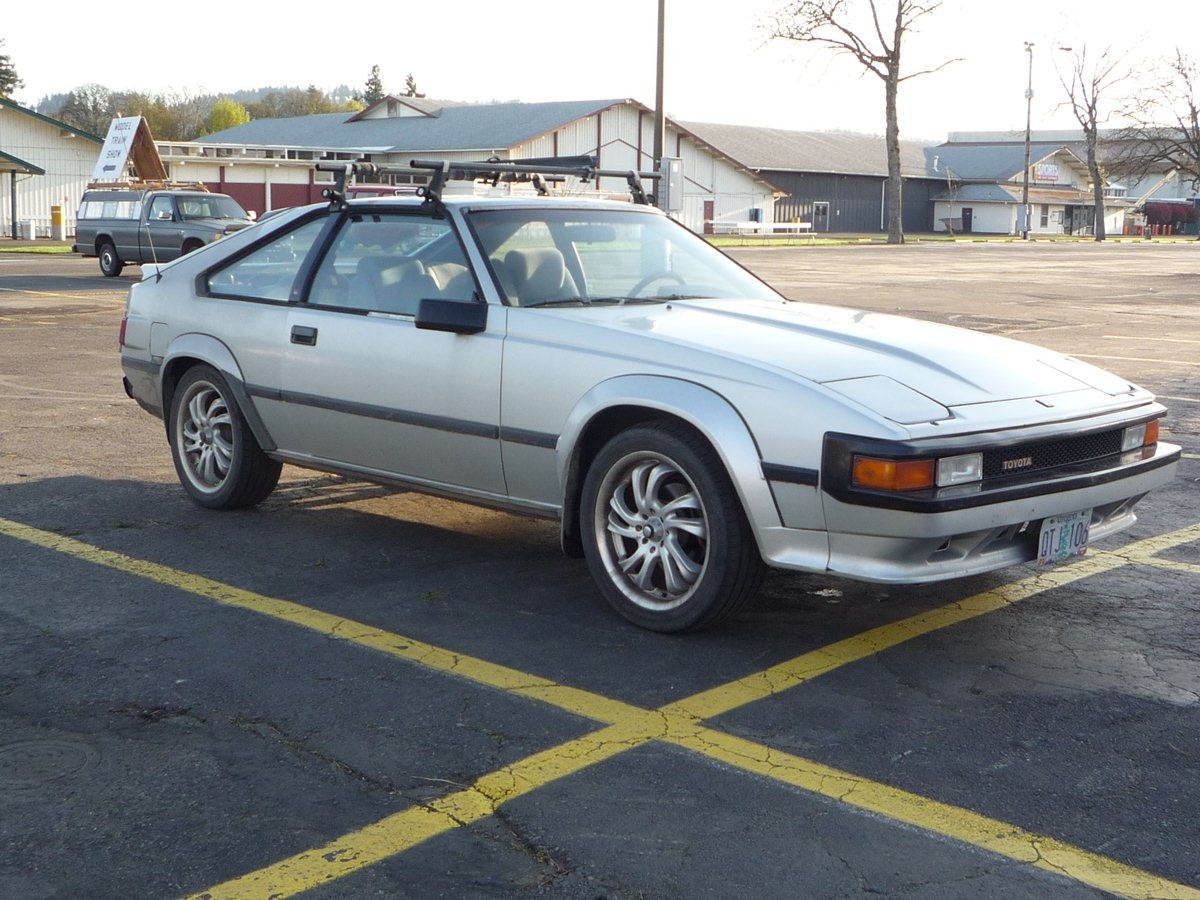Do you ever look back at past decisions, especially car-buying choices, and wonder “what if?” Reflecting on the second-generation Toyota Celica Supra, known to enthusiasts as the Mk II, brings up just such thoughts. Why, when considering a sporty coupe in the early 80s, would one choose a Ford Thunderbird Turbo Coupe over this refined Japanese machine? The Toyota Celica Supra Gt, though perhaps not officially badged as such, offered a compelling package that overshadowed many of its American contemporaries. Let’s delve into what made the Mk II Supra a standout in its era.
While the Mk I Supra might have leaned towards a softer, grand touring character reminiscent of a “Japanese Riviera,” the Mk II Toyota Celica Supra GT aimed for a sportier, more focused driving experience, drawing comparisons to the BMW M3 of its day, at least in spirit. Imagine the Los Angeles of the 1980s: young, urban professionals, many with Asian backgrounds, seeking a stylish and capable car. The Mk II Supra fit this profile perfectly, offering a blend of performance and sophistication that the Nissan 280ZX, for instance, couldn’t quite match in terms of image. The Supra Mk II was a car that appealed to those who appreciated a balance of sport and luxury.
Design and Styling: A Sharper Edge
The Mk II Toyota Celica Supra GT retained its Celica underpinnings, but with a significantly elongated front end to house its inline-six engine. This second iteration of the Supra’s design felt more cohesive, perhaps because the longer nose was integrated from the initial design phase in Japan, unlike the California-designed Mk I Celica-based Supra. The Mk II embraced a more angular and detailed aesthetic, a departure from the smoother, more rounded lines of its predecessor. This design direction reflected a broader Japanese design sensibility of the era, favoring intricate details and multifaceted surfaces.
While some might have been drawn to the aerodynamic simplicity of cars like the T-Bird, the Mk II Supra’s busy, angular styling had its own appeal. It projected a sense of modern sophistication and performance, characteristics that resonated with buyers seeking a contemporary sports coupe.
The Heart of the Supra: The 5M-GE Engine
For enthusiasts of inline-six engines, the Toyota Celica Supra GT’s powerplant was a major draw. The 2.8-liter DOHC inline-six was a smooth and refined unit, offering ample power for the time. While its output might seem modest by today’s standards—ranging from 145 hp in 1982 to 161 hp by 1986—it was competitive with the era’s Mustang GT. However, the Supra’s engine delivered its power with a level of smoothness and sophistication that the Mustang, despite its performance bargain, simply couldn’t match.
This engine, designated 5M-GE, was shared with the Toyota Cressida and represented an evolution of Toyota’s M-family of inline-sixes. Notably, it was the first twin-cam engine in the family to utilize rocker arms and hydraulic valve lifters, eliminating the need for manual valve adjustments. Later models from 1983 onwards also benefited from Toyota’s sophisticated Electronic Engine Management System (TCCS), further enhancing efficiency and performance.
L-Type and P-Type: Catering to Different Tastes
Toyota offered the Mk II Supra in two distinct trim levels: the L-type, focused on luxury and comfort, and the P-type, geared towards performance. The P-type, or Performance Type, was the more desirable option for driving enthusiasts, featuring wider fender flares, upgraded tires and suspension tuning, sport seats with eight-way adjustability, and a limited-slip differential. The L-type, or Luxury Type, highlighted features like an optional digital instrument panel with an integrated trip computer, cutting-edge technology for 1982. While the L-type offered technological novelty, the P-type delivered a more engaging and sporty driving experience.
Driving Dynamics: Refinement vs. Rawness
A brief drive in a Mk II Supra reveals a stark contrast to cars like the Turbo Coupe. Despite being in a similar sporty coupe category, they represented almost opposite approaches to performance. The Turbo Coupe might have felt lighter and more agile, but the Supra conveyed a sense of solidity and composure, akin to a Mercedes-Benz, especially in its ability to handle imperfect road surfaces thanks to its four-wheel independent suspension.
The most significant difference lay under the hood. Where the Turbo Coupe’s turbocharged four-cylinder engine could become thrashy and strained at higher RPMs, delivering power in abrupt bursts, the Supra’s inline-six offered a smooth, linear power delivery. This refined engine character was more comparable to the sophisticated inline-six found in the later Mercedes-Benz W124 300E, a car that eventually replaced the Turbo Coupe and left no room for regret.
Conclusion: A Wise Choice Revisited
Looking back, the Toyota Celica Supra GT (Mk II) stands out as a smart choice for those seeking a refined and capable sports coupe in the 1980s. Its sophisticated inline-six engine, available performance-oriented P-type trim, and overall build quality positioned it as a compelling alternative to both American and European rivals. For those who appreciate a blend of performance, comfort, and Japanese engineering excellence, the Mk II Supra remains a classic worth remembering and perhaps even reconsidering today.

